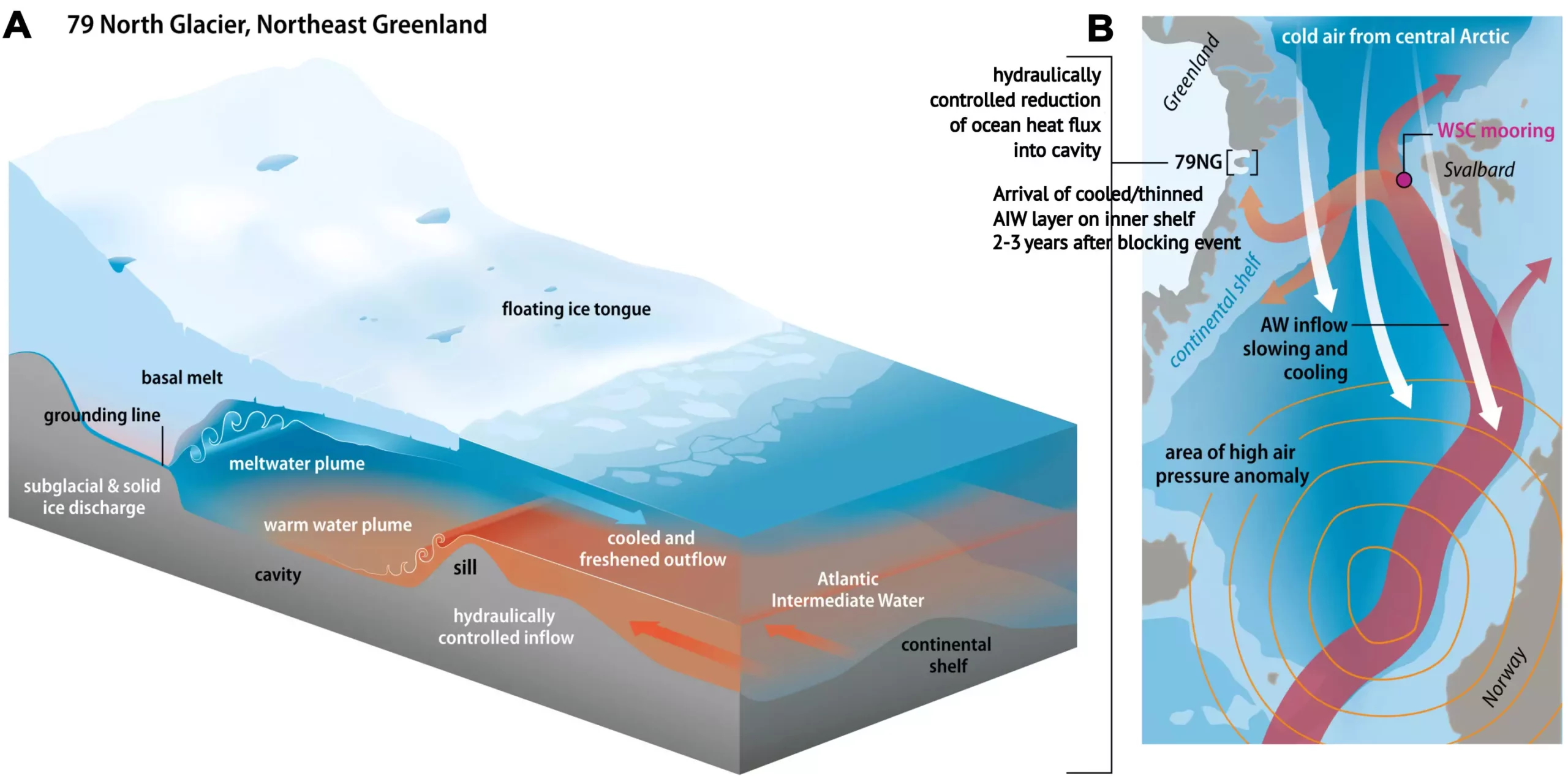Northeast Greenland’s 79° N Glacier, the largest floating glacier tongue in the nation, stands at a critical juncture due to the alarming effects of global warming. This magnificent natural structure has been under siege, principally from the warm waters of the Atlantic Ocean, which erode the glacier from below. While this might seem a straightforward narrative of climate degradation, recent research from the Alfred Wegener Institute (AWI) introduces a nuanced perspective, revealing that between 2018 and 2021, the temperature of the water infiltrating the glacier’s cavern actually decreased, contrary to the prevailing trend of ocean warming. This anomaly, potentially caused by changing atmospheric circulation patterns, calls for a deeper understanding of glacial dynamics and their broader implications for sea level rise.
A newly published study in the journal Science has triggered renewed interest in the interactions between the ocean and Greenland’s ice structures. The research team led by Dr. Rebecca McPherson documented the intriguing phenomenon of reduced water temperatures entering the glacier cavern during a period of overall warming in the Atlantic. Dr. McPherson’s statement that “less oceanic warmth was transported under the ice during this period” provides a critical clue to understanding the glacier’s melting behavior. The implications of this cooling phase raise questions about the long-term stability of not just the 79° N Glacier but also of the vast Greenland Ice Sheet as a whole.
With mass loss from the Greenland Ice Sheet escalating over recent decades, predictions indicate that the Northeast Greenland Ice Stream, which feeds into the 79° N Glacier, could contribute significantly to global sea levels—potentially even one meter if the glacier were to entirely melt. This information highlights an urgent need for improved climate forecasting, especially concerning how glacial environments respond to fluctuations in ocean temperatures.
Understanding the source of the cold water that reached the glacier cavern is central to deciphering the relationship between atmospheric conditions and glacial integrity. The AWI researchers gathered data from 2016 to 2021 using sophisticated oceanographic moorings. Their findings revealed an initial rise in Atlantic water temperatures, followed by a cooling phase characterized by a drop of 0.65 degrees Celsius starting in early 2018. The source of this cooling was traced back upstream to the Fram Strait and the Norwegian Sea, marking a significant shift in the dynamics of water flow and temperature regulation within these vital marine environments.
What becomes increasingly evident is the role of atmospheric blocking—persistent high-pressure systems that disrupt typical air flow patterns. Such phenomena facilitated a flow of cold Arctic air into the Norwegian Sea, which subsequently cooled the Atlantic water on its journey toward Greenland. This interplay of atmospheric conditions demonstrates the complex systems at work and underlines the importance of understanding ocean-atmosphere interactions in glacier movements.
The implications of this research extend beyond mere academic interest; they possess profound ramifications for predicting future sea-level rise. As Dr. McPherson emphasizes, insights gained through such studies can refine our predictions regarding glacier behavior amidst ongoing climate shifts. The cyclical nature of water temperature changes and their subsequent impacts on the 79° N Glacier illustrate the volatility inherent in our climate systems.
With water temperatures in the Fram Strait currently on the rise again, impending research expeditions aboard the Polarstern icebreaker in 2025 aim to gather further data. Scientists will closely monitor how these changes affect glacier melting rates in real time—essentially bridging the gap between atmospheric science and glaciology. Understanding these dynamics is paramount; as noted by Prof. Torsten Kanzow, the inflow of warm water into glacial caverns is intimately linked to the Atlantic Meridional Overturning Circulation (AMOC), a critical component of the Earth’s climate system that may itself be altering as the planet warms.
As we delve deeper into the intricacies surrounding the 79° N Glacier and its interconnected systems, it becomes increasingly clear that our understanding of climate change must encompass both regional and global perspectives. The findings of the AWI research team underscore the need for continuing exploration and data collection in icy frontiers. With our global climate challenge mounting, concerted efforts aimed at mitigating warming and developing accurate predictive models for glacial behavior are not just necessary—they are imperative for safeguarding future generations. The fate of the 79° N Glacier is a mirror reflecting the broader climate crisis, one that should galvanize immediate action and awareness in a world that grows warmer by the day.


Leave a Reply